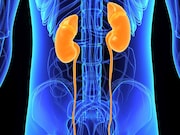Aneurysms detected by presymptomatic screening, more frequent in those with hypertension, smoking
THURSDAY, Aug. 1, 2019 (HealthDay News) — Intracranial aneurysms are detected in 9 percent of patients with autosomal dominant polycystic kidney disease (ADPKD) undergoing magnetic resonance angiography (MRA) screening, according to a study published online July 30 in the Clinical Journal of the American Society of Nephrology.
Irina M. Sanchis, M.D., from the Mayo Clinic in Rochester, Minnesota, and colleagues reviewed records of 3,010 ADPKD patients assessed between 1989 and 2017. Records from 812 patients with presymptomatic MRA screening were included.
The researchers found that intracranial aneurysms were diagnosed in 9 percent of patients who underwent MRA screening. Hypertension and history of smoking were more common in the aneurysm group. A family history of subarachnoid hemorrhage was seen in 29 and 11 percent of those with and without aneurysms, respectively. During 469 patient-years of total imaging follow-up, five patients had de novo intracranial aneurysms detected and eight intracranial aneurysms grew (median, 2 mm). Seven patients had preemptive clipping or coil embolization during a total clinical follow-up of 668 patient-years; no intracranial aneurysms ruptured. Two patients had an intracranial aneurysm rupture during a total clinical follow-up of 4,783 patient-years in 737 patients with no intracranial aneurysm detected on the first MRA screening (0.04 per 100 person-years).
“Our approach has been to recommend screening for patients with ADPKD who have a family history of aneurysm,” a coauthor said in a statement. “The results [of] our study do not provide a reason for changing our current approach.”
Several authors disclosed financial ties to biopharmaceutical industry.
Copyright © 2019 HealthDay. All rights reserved.








